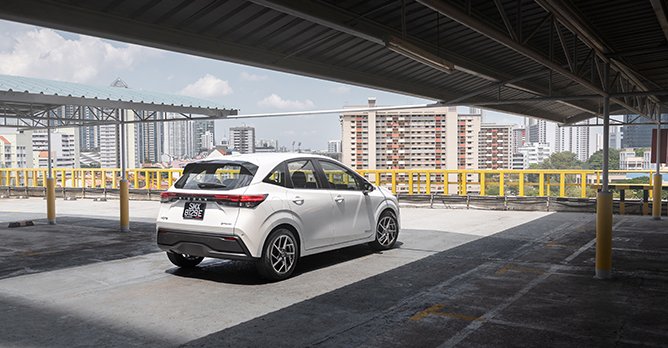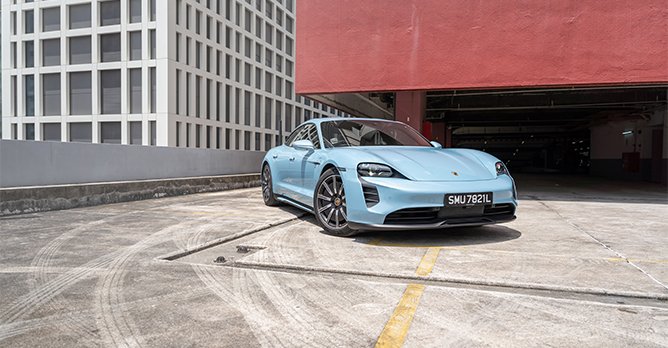Enhanced VES scheme extended till end-2025, pollutant thresholds tightened from 2024
30 Jun 2022|10,906 views
The last time changes were announced to the VES scheme in 2020, both the rebates placed on cleaner vehicles as well as surcharges placed on more heavily-polluting ones were increased.
This time round, however, it appears that the status quo for the latter will be maintained for quite a while. The LTA and NEA jointly announced on 30 June 2022 that existing surcharge amounts will not be amended for the C1 to C2 bands of the VES scheme, and that these reinforced rules will hold until 31 December 2025.
Cars that fall under A1 banding are deemed to have the lowest or cleanest emissions; vice versa for those under C2. Under the current regulations, buyers can enjoy a rebate, or get penalised with a surcharge of up to $25,000 on their ARF (additional registration fee) depending on the models they buy.
However, in the growing push towards a EV-centred future, the qualifying criteria for A1 banding is set to be even stricter with tightened pollutant thresholds.
Come 1 January 2024, only buyers of cars with zero tailpipe emissions - in other words, fully electric cars - will be able to enjoy the A1 rebates. These new regulations mean that all future A1-banded cars will not be allowed to emit any hydrocarbons, carbon monoxide, or nitrogen oxides. Examples of such cars include the MG ZS Electric and Nissan Leaf.
Also noteworthy is the fact that even full EVs with a higher level of power consumption will not qualify for A1. The Porsche Taycan 4S, for instance, will still fall under the A2 band.
It appears that the rebate amounts for both the A1 and A2 bands will change come 2024. The agencies' joint press release states: "More details will be released when ready."
This time round, however, it appears that the status quo for the latter will be maintained for quite a while. The LTA and NEA jointly announced on 30 June 2022 that existing surcharge amounts will not be amended for the C1 to C2 bands of the VES scheme, and that these reinforced rules will hold until 31 December 2025.
Cars that fall under A1 banding are deemed to have the lowest or cleanest emissions; vice versa for those under C2. Under the current regulations, buyers can enjoy a rebate, or get penalised with a surcharge of up to $25,000 on their ARF (additional registration fee) depending on the models they buy.
However, in the growing push towards a EV-centred future, the qualifying criteria for A1 banding is set to be even stricter with tightened pollutant thresholds.
Come 1 January 2024, only buyers of cars with zero tailpipe emissions - in other words, fully electric cars - will be able to enjoy the A1 rebates. These new regulations mean that all future A1-banded cars will not be allowed to emit any hydrocarbons, carbon monoxide, or nitrogen oxides. Examples of such cars include the MG ZS Electric and Nissan Leaf.
Also noteworthy is the fact that even full EVs with a higher level of power consumption will not qualify for A1. The Porsche Taycan 4S, for instance, will still fall under the A2 band.
It appears that the rebate amounts for both the A1 and A2 bands will change come 2024. The agencies' joint press release states: "More details will be released when ready."
| Band | Rebate/surcharge (-/+) for cars up till 31 December 2023 | Rebate/Surcharge (-/+) from 1 January 2024 to 31 December 2025 |
| A1 | -$25,000 | TBC |
| A2 | -$15,000 | TBC |
| B | 0 | 0 |
| C1 | +$15,000 | +$15,000 |
| C2 | +$25,000 | +$25,000 |
The last time changes were announced to the VES scheme in 2020, both the rebates placed on cleaner vehicles as well as surcharges placed on more heavily-polluting ones were increased.
This time round, however, it appears that the status quo for the latter will be maintained for quite a while. The LTA and NEA jointly announced on 30 June 2022 that existing surcharge amounts will not be amended for the C1 to C2 bands of the VES scheme, and that these reinforced rules will hold until 31 December 2025.
Cars that fall under A1 banding are deemed to have the lowest or cleanest emissions; vice versa for those under C2. Under the current regulations, buyers can enjoy a rebate, or get penalised with a surcharge of up to $25,000 on their ARF (additional registration fee) depending on the models they buy.
However, in the growing push towards a EV-centred future, the qualifying criteria for A1 banding is set to be even stricter with tightened pollutant thresholds.
Come 1 January 2024, only buyers of cars with zero tailpipe emissions - in other words, fully electric cars - will be able to enjoy the A1 rebates. These new regulations mean that all future A1-banded cars will not be allowed to emit any hydrocarbons, carbon monoxide, or nitrogen oxides. Examples of such cars include the MG ZS Electric and Nissan Leaf.
Also noteworthy is the fact that even full EVs with a higher level of power consumption will not qualify for A1. The Porsche Taycan 4S, for instance, will still fall under the A2 band.
It appears that the rebate amounts for both the A1 and A2 bands will change come 2024. The agencies' joint press release states: "More details will be released when ready."
This time round, however, it appears that the status quo for the latter will be maintained for quite a while. The LTA and NEA jointly announced on 30 June 2022 that existing surcharge amounts will not be amended for the C1 to C2 bands of the VES scheme, and that these reinforced rules will hold until 31 December 2025.
Cars that fall under A1 banding are deemed to have the lowest or cleanest emissions; vice versa for those under C2. Under the current regulations, buyers can enjoy a rebate, or get penalised with a surcharge of up to $25,000 on their ARF (additional registration fee) depending on the models they buy.
However, in the growing push towards a EV-centred future, the qualifying criteria for A1 banding is set to be even stricter with tightened pollutant thresholds.
Come 1 January 2024, only buyers of cars with zero tailpipe emissions - in other words, fully electric cars - will be able to enjoy the A1 rebates. These new regulations mean that all future A1-banded cars will not be allowed to emit any hydrocarbons, carbon monoxide, or nitrogen oxides. Examples of such cars include the MG ZS Electric and Nissan Leaf.
Also noteworthy is the fact that even full EVs with a higher level of power consumption will not qualify for A1. The Porsche Taycan 4S, for instance, will still fall under the A2 band.
It appears that the rebate amounts for both the A1 and A2 bands will change come 2024. The agencies' joint press release states: "More details will be released when ready."
| Band | Rebate/surcharge (-/+) for cars up till 31 December 2023 | Rebate/Surcharge (-/+) from 1 January 2024 to 31 December 2025 |
| A1 | -$25,000 | TBC |
| A2 | -$15,000 | TBC |
| B | 0 | 0 |
| C1 | +$15,000 | +$15,000 |
| C2 | +$25,000 | +$25,000 |
Latest COE Prices
November 2025 | 2nd BIDDING
NEXT TENDER: 03 Dec 2025
CAT A$109,000
CAT B$129,890
CAT C$76,389
CAT E$125,001
View Full Results Thank You For Your Subscription.





















